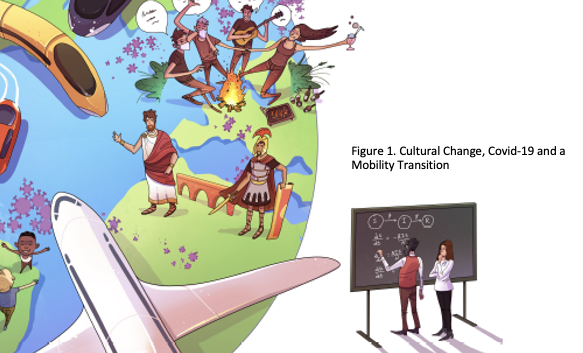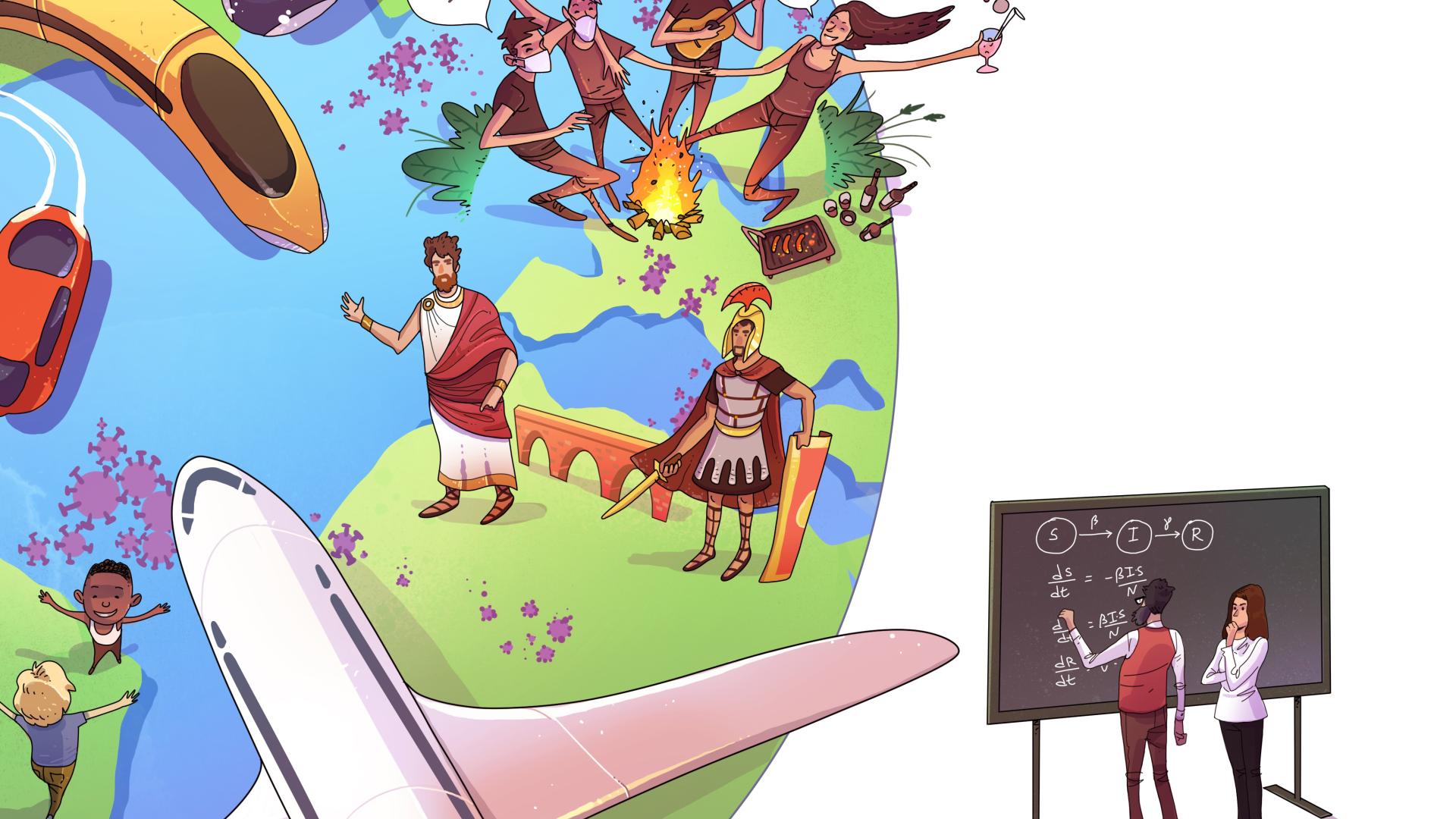Modern societies face numerous significant challenges, including climate change, health pandemics, forced migration, political instability and social injustice. Understanding and addressing the underlying causes of these issues are essential steps toward fostering a more resilient and fair society.
At ZIB we actively advance this objective by developing large-scale computational models that can simulate human actions and their inter-actions with other people as well as with their environment. These models are simplified representations of reality that serve as valuable tools for learning about complex social dynamics, testing hypotheses, evaluating the impact of different policies and predicting potential future scenarios. Our goal is to provide mathematical formulations that describe the underlying principles of social systems and develop methods for their thorough computational analysis, and efficient simulation and optimization to support decision-making processes in diverse societal domains [6, 7].
In 2020, while facing the COVID-19 pandemic, our team collaborated with researchers from TU Berlin and the MATH+ Cluster of Excellence to develop an so-called agent-based model (ABM) for simulating the spread of infection that enabled an accurate assessment of different non-pharmaceutical measures against the virus [10]. This ABM consists of large numbers of individual agents who behave like humans that make individual choices regarding mobility and social interactions, resulting in the emergence of collective patterns on the population scale. We used real-world mobility data, infection statistics and realistic behavioral patterns to calibrate the model for analyzing the infection dynamics in different regions in Germany. Within the project MODUS-COVID, we implemented this ABM on ZIB’s supercomputer for millions of agents and tested different scenarios, which we published as periodic reports to the German federal government [8].

The abstract formulation of this model not only makes it generalizable to other forms of epidemic spreading providing a framework that can be applied in future contexts [9], but also extends its application to different settings. We apply these models to study spreading processes in ancient times, offering a long-term historical perspective on the fundamental aspects of human societies. Through interdisciplinary collaborations with archaeologists, anthropologists and geographers we formulated several mathematical models to investigate the complex relation-ship between human mobility and the cultural evolution of the past societies [1, 2, 11]. In particular, with our colleagues from the German Archaeological Institute (DAI), we studied the interplay between the process of Romanization in northern Tunisia and the temporal changes in the region’s road network [5]. Our results provide valuable insights for understanding the evolution of Roman culture, whose achievements continue to shape and inspire modern society.
Our current research is on expanding these computational approaches for diverse problems of social relevance, including the formation and evolution of opinions influenced by social media, political currents and socio-economic impacts [3, 4]. Our goal is to build models that provide underpinning on how people shape their opinions and facilitate the development of strategies to address challenges such as polarization, the creation of echo chambers and the potential manipulation by influencers or automated bots. Ultimately, we envision contributing to the establishment of a more resilient society.
References:
[1] F. Becker, N. Djurdjevac Conrad, R. A. Eser, L. Helfmann, B. Schütt, C. Schütte, and J. Zonker. The furnace and the goat - a spatio-temporal model of the fuel-wood requirement for iron metallurgy on Elba island, 4th century bce to 2nd century ce. PLOS ONE 15 (2020), 1–37. DOI: 10.1371/journal.pone.0241133.
[2] N. Djurdjevac Conrad, L. Helfmann, J. Zonker, S. Winkelmann, and C. Schütte. Human mobility and innovation spreading in ancient times: a stochastic agent-based simulation approach. EPJ Data Science 7.1 (2018). DOI: 10.1140/epjds/s13688-018-0153-9.
[3] N. Djurdjevac Conrad, J. Köppl, and A. Djurdjevac. Feedback loops in opinion dynamics of agent-based models with multiplicative noise. Entropy 24(10) (2022). DOI: 10.3390/e24101352.
[4] L. Helfmann, N. Djurdjevac Conrad, P. Lorenz-Spreen, and C. Schütte. Modelling opinion dynamics under the impact of influencer and media strategies. Scientific Reports 13 (2023), 19375. DOI: 10.1038/s41598-023-46187-9.
[5] M. Kostré, V. Sunkara, C. Schütte, and N. Djurdjevac Conrad. Understanding the romanization spreading on historical interregional networks in Northern Tunisia. Applied Network Science 7 (2022). DOI: 10.1007/s41109-022-00492-w.
[6] J.-H. Niemann, S. Klus, N. Djurdjevac Conrad, and C. Schütte. Koopman-based surrogate models for multi-objective optimization of agent-based systems. Physica D: Nonlinear Phenomena 460 (2024), 134052. DOI: https://doi.org/10.1016/j.physd. 2024.134052.
[7] J.-H. Niemann, S. Uram, S. Wolf, N. Djurdjevac Conrad, and M. Weiser. Multilevel optimization for policy design with agent-based epidemic models. Computational Science 77 (2024), 102242. DOI: 10.1016/j. jocs.2024.102242.
[8] Umweltbundesamt. Modus-covid szenarienstudien zur eindämmung von covid-19. 2020-2022. URL: https://www.zib.de/projects/mobilitaetsmodelle-berlin.
[9] S. Winkelmann, J. Zonker, C. Schütte, and N. Djurdjevac Conrad. Mathematical modeling of spatiotemporal population dynamics and application to epidemic spreading. Mathematical Biosciences 336 (2021). DOI: 10.1016/j.mbs.2021.108619.
[10] H. Wulkow, T. Conrad, N. Djurdjevac Conrad, S. A. Müller, K. Nagel, and C. Schütte. Prediction of covid-19 spreading and optimal coordination of counter-measures: from microscopic to macroscopic models to pareto fronts. PLOS One 16.4 (2021). DOI: 10.1371/journal.pone.0249676.
